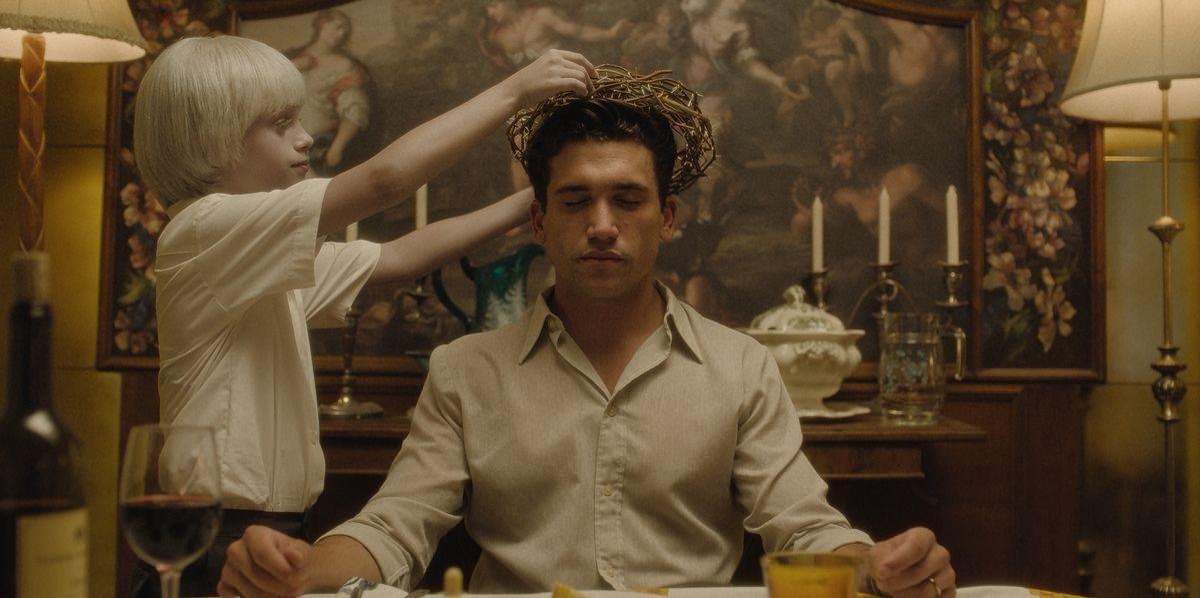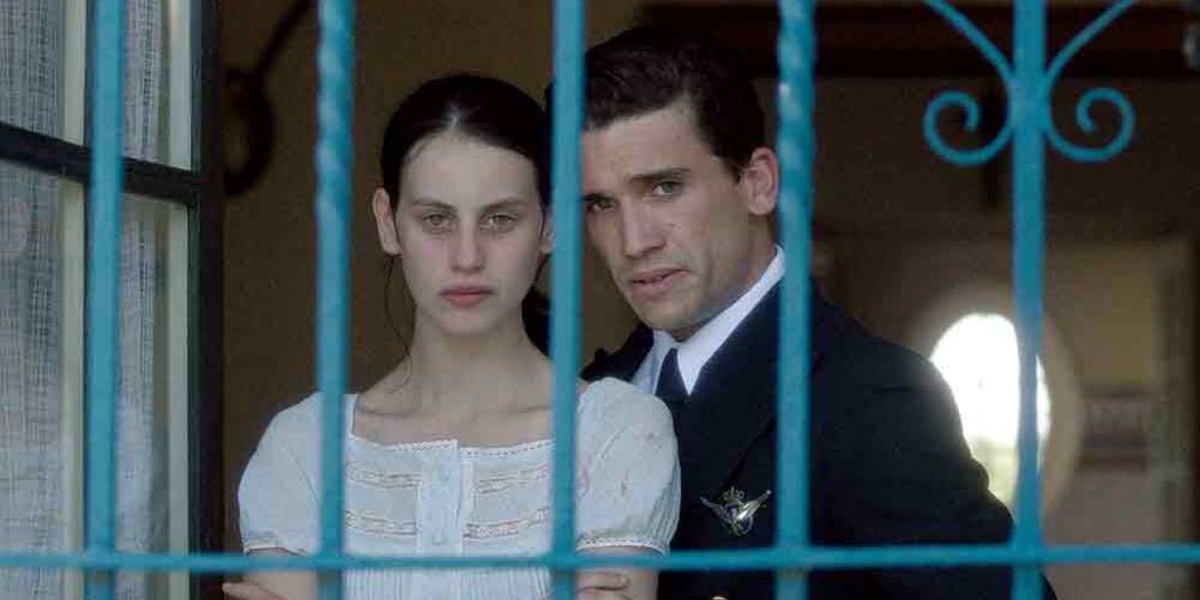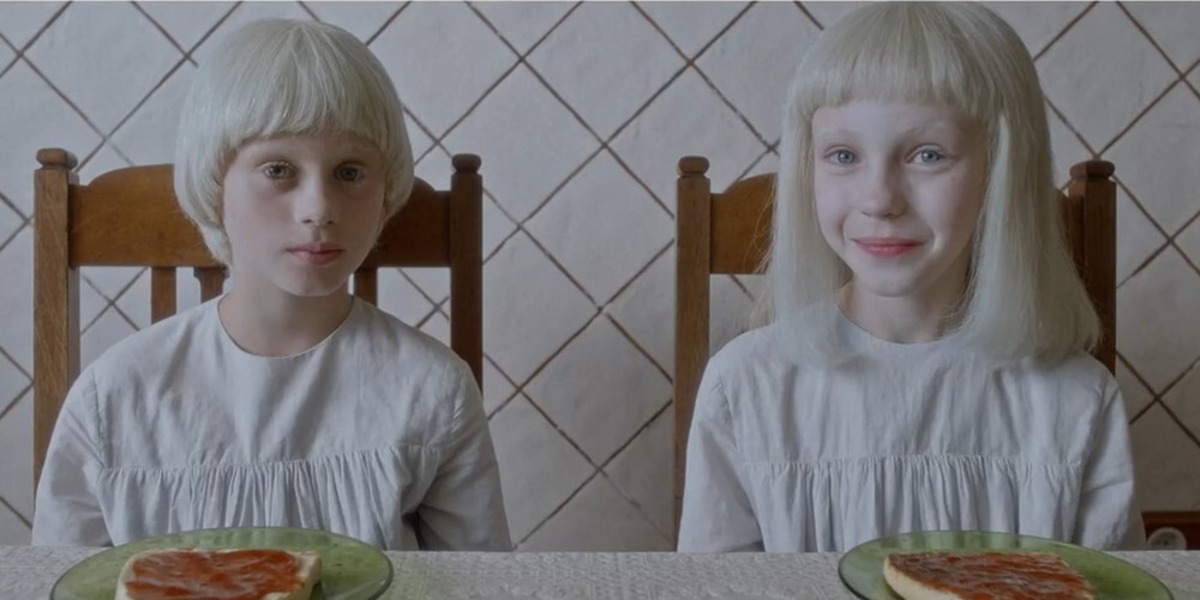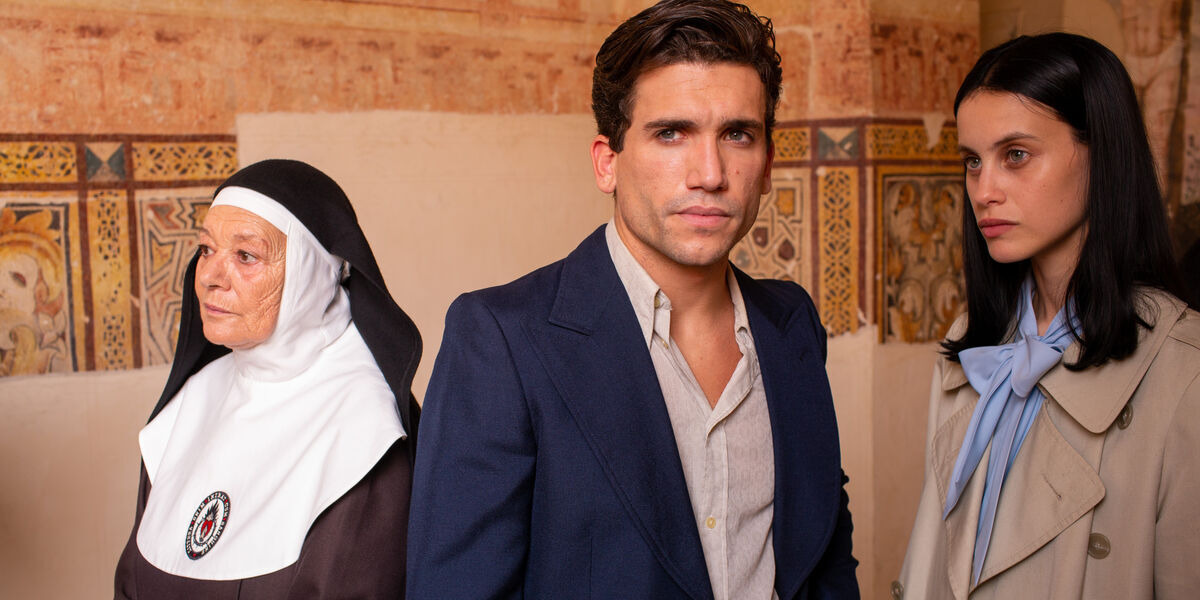Netflix’s ‘Tin & Tina’ is a psychological thriller movie directed by Rubin Stein and is based on his 2013 short film of the same name. The Spanish movie revolves around Lola and Adolfo, a young couple who decide to adopt two orphan twins after losing their unborn twins. However, the creepy twins’ religious teachings and upbringing lead to inexplicable events that disturb the family’s sanctity. However, the movie concludes with a few unanswered questions about the family’s fate. Hence, viewers must be looking for an explanation about the ending of ‘Tin & Tina.’ SPOILERS AHEAD!
Tin & Tina Plot Synopsis
‘Tin & Tina’ is set during the early 1980s in Spain and follows a young couple, Lola (Milena Smit) and Adolfo (Jaime Lorente). On their wedding day, Lola, who is pregnant with twins, suffers a miscarriage. As a result, she loses her children and cannot become a mother again. Six months later, Adolfo and Lola live in a big countryside house. However, Lola is depressed, and Adolfo focuses on work. He tries to encourage Lola to move on from losing their unborn children. Soon, Adolfo convinces Lola to adopt a baby from the local convent’s orphanage.

At the convent, Lola hears the music in the chapel and learns from the nun about two orphan children playing it. The nun introduces Lola to Tin and Tina, orphan twins who live in the convent. Lola is enamored with the twins, partly due to the loss of her own twins. After briefly interacting with them, Lola adopts Tin and Tina, convincing Adolfo to support her decision. Lola and Adolfo bring Tin and Tina home and introduce them to Kuki, their pet dog. However, Kuki becomes disturbed by the twins’ arrival and barks at them, scaring Tin and Tina. The twins quickly settle into their new surroundings, but Lola is concerned about their overtly religious upbringing in the convent.
Lola realizes that Tin and Tina are familiar with the Bible and take its words literally. As a result, she has some odd experiences with the twins. However, Lola tries to love them like a mother, and the children warm up to her and Adolfo. One day, Tin and Tina show Lola a game that supposedly shows them God. However, it requires wrapping a bag and suffocating oneself. Lola prohibits the children from attempting the game again, but Tin reveals he prayed for a miracle for Lola. The twins attend the local school and are billed by a boy named Perdo. Meanwhile, Lola becomes pregnant, and the family is delighted to learn the news.
Tin and Tina try to cleanse Kuki’s soul after the dog goes out of control and hurts Lola. However, they end up butchering the poor dog. During a commune, Pedro is found injured and falls into a coma. As a result, Lola suspects Tin and Tina had something to do with the incident. She finds drawings of Kuki and Pedro’s death in the children’s Bible and starts believing they are evil. When Lola tells Adolfo about the drawings and the children’s behavior, he encourages her to teach them the difference between right and wrong. As a result, Lola prohibits religion in the house and locks away the twins’ books and other holy items.
Tin & Tina Ending: How Does Lola Save Her Baby?
After Lola prohibits the children from speaking of religion in the house, things seemingly return to normal. However, Loal becomes distant from the children, and they grow close to Adolof. Lola’s baby, a boy, is born, and the children like their new family member. However, Tina and Tina want to baptize the baby, but Lola refuses. As a result, the children distract Adolfo and Lola and try to baptize the baby. Lola arrives in time and saves the baby but becomes enraged with the kids. Adolfo burns down their Bible, and they are returned to the convent.

Sometime later, Lola and Adolfo celebrate their son’s one-month anniversary. However, Lola laments giving up the kids and believes she is a bad mother. Lola and Adolfo argue and return home as the weather gets stormy. After returning home, Adolfo tries to fix the television antenna, but the lightning strikes and he is set on fire. Lola desperately tries to find her son while the house burns down, but the baby is missing from his crib. With no other option, Lola performs the trick of seeing God and begs him to return her baby. Soon after, Lola finds her baby in the crib and escapes the fire.
Ultimately, Lola saves her baby by finally giving in to the children’s faith in God. She believes Tin and Tina are behind her son’s disappearance and Adolfo’s death. However, she wakes up in the hospital and learns from the nun that the twins were in the convent all night. The film ends with Lola accepting Tin and Tina as her children and is convinced of their innocence. Moreover, she believes that her son was returned to her by God’s miracle and becomes religious like Tin and Tina. As a result, the ending implies that Tin and Tina wanted their parents to share their faith in God, and all their actions throughout the movie seem to be a cry for the same.
Are Tin and Tina Evil?
The film’s ending leaves an air of mystery over the true nature and motives. Tin and Tina have grown up at a convent, explaining their strong affinity for all things religious. However, when Lola and Adolfo adopt them, the children struggle to view the outside world from the confines of their religious beliefs. Their actions quickly take an evil connotation when they cause the death of the family’s dog. However, these actions are contrasted by their seemingly genuine care for their adoptive parents, including moments such as Tin praying to God for Lola to have her own baby.

The film’s final act sees Adolfo dying in a fire, similar to how he burned down the Bible. Pedro also pays for bullying the children with his life. However, Lola and her baby are spared. Moreover, the nun confirms that the twins never left the convent on the night Lola’s house was set on fire. Hence, it seems like the children’s misguided actions came from a genuine lack of understanding of how the real world functions. Nonetheless, the disturbing actions around them become increasingly inexplicable. The film ends with a verse from the Bible that underlines the innocence and holiness within children, seemingly confirming that Tin and Tina aren’t actually evil.
On the other hand, a major clue about the twins’ motivation is provided in two crucial but subtly planted moments. When the twins try to show their love for Lola, they tie her to the bed and try to feed her and the baby. Lola threatens them with the thought of sin, but the kids remind her that religion is prohibited in the house. This seemingly throwaway moment of self-awareness suggests the children are completely aware of the severity of their actions.
Secondly, another scene depicts Tin and Tina’s names scribbled on a wall as the house burns down, Adolfo dies, and Lola searches for her baby. The inscription suggests the children were actually at the house and perpetrated the events. Ultimately, all the horrifying events in the climax can be either attributed to the Act of God or the twins’ machinations, the latter of which seems to confirm Tin and Tina’s sinister nature. However, therein lies the banality of the co-existence between religion and evil. Thus, the film encourages viewers to understand the relationship between children, religion, and their perception of good and evil instead of giving an outright confirmation of Tin and Tina’s true nature.
Read More: Where Was Netflix’s Tin & Tina Filmed?


You must be logged in to post a comment.